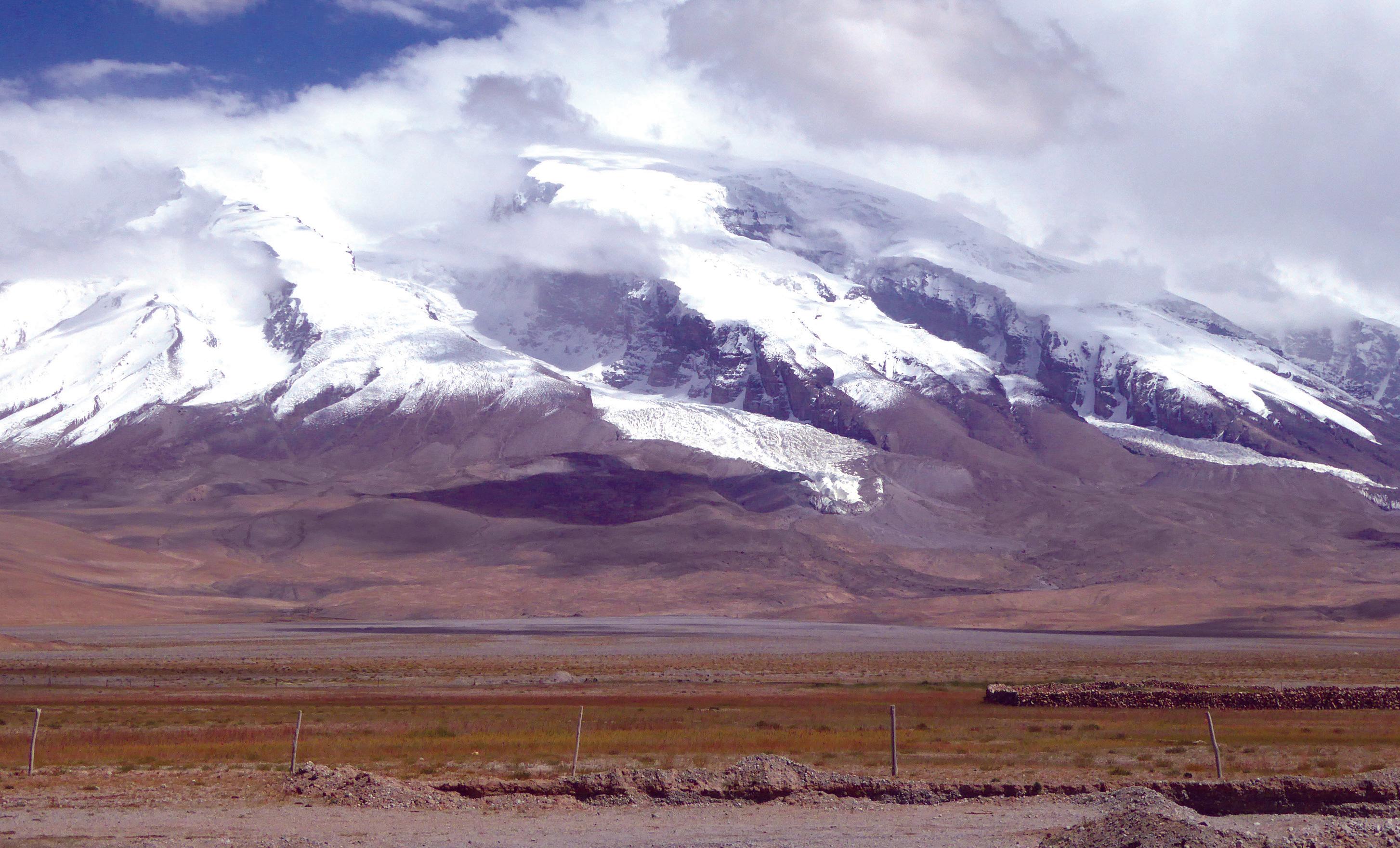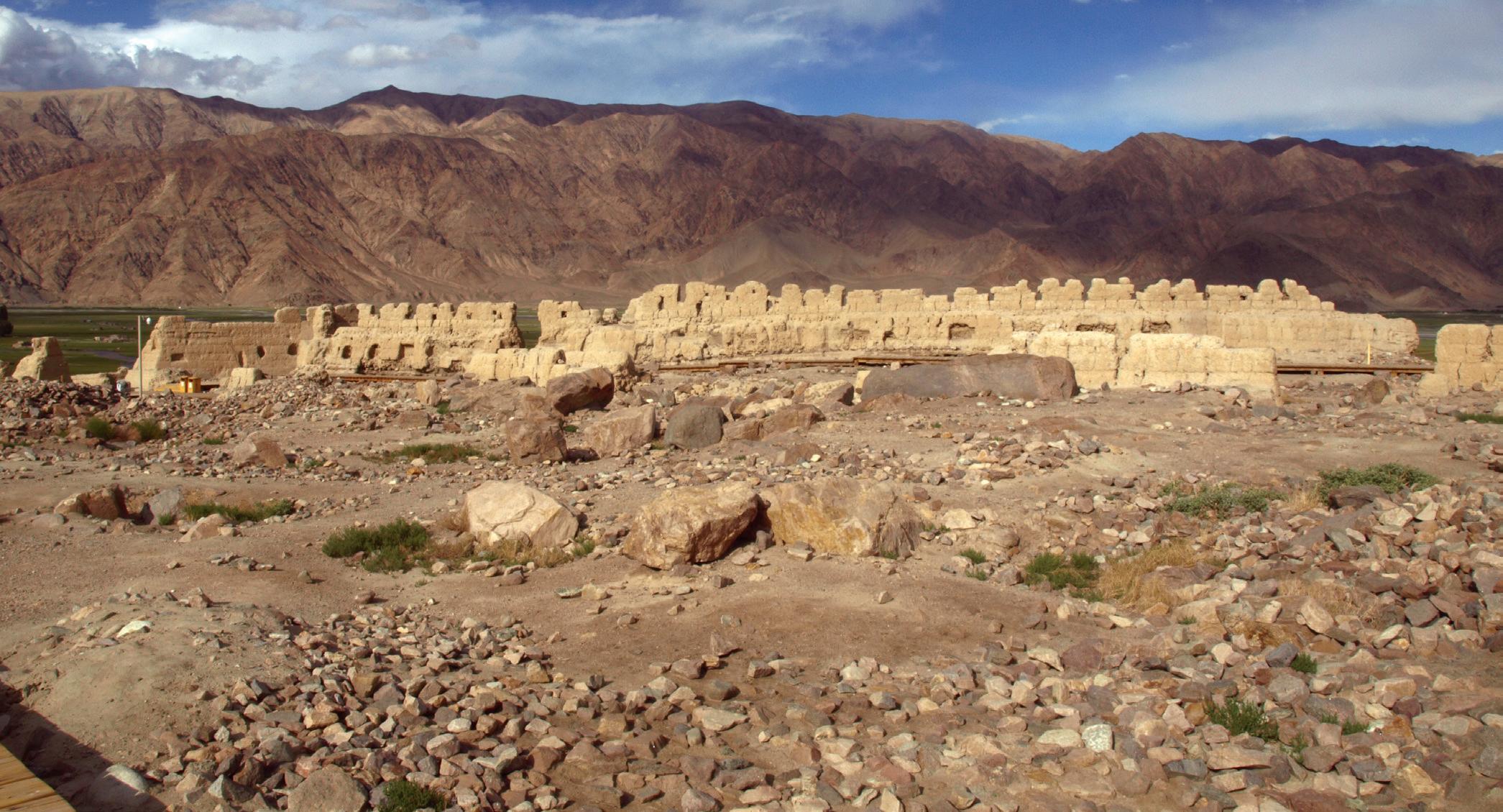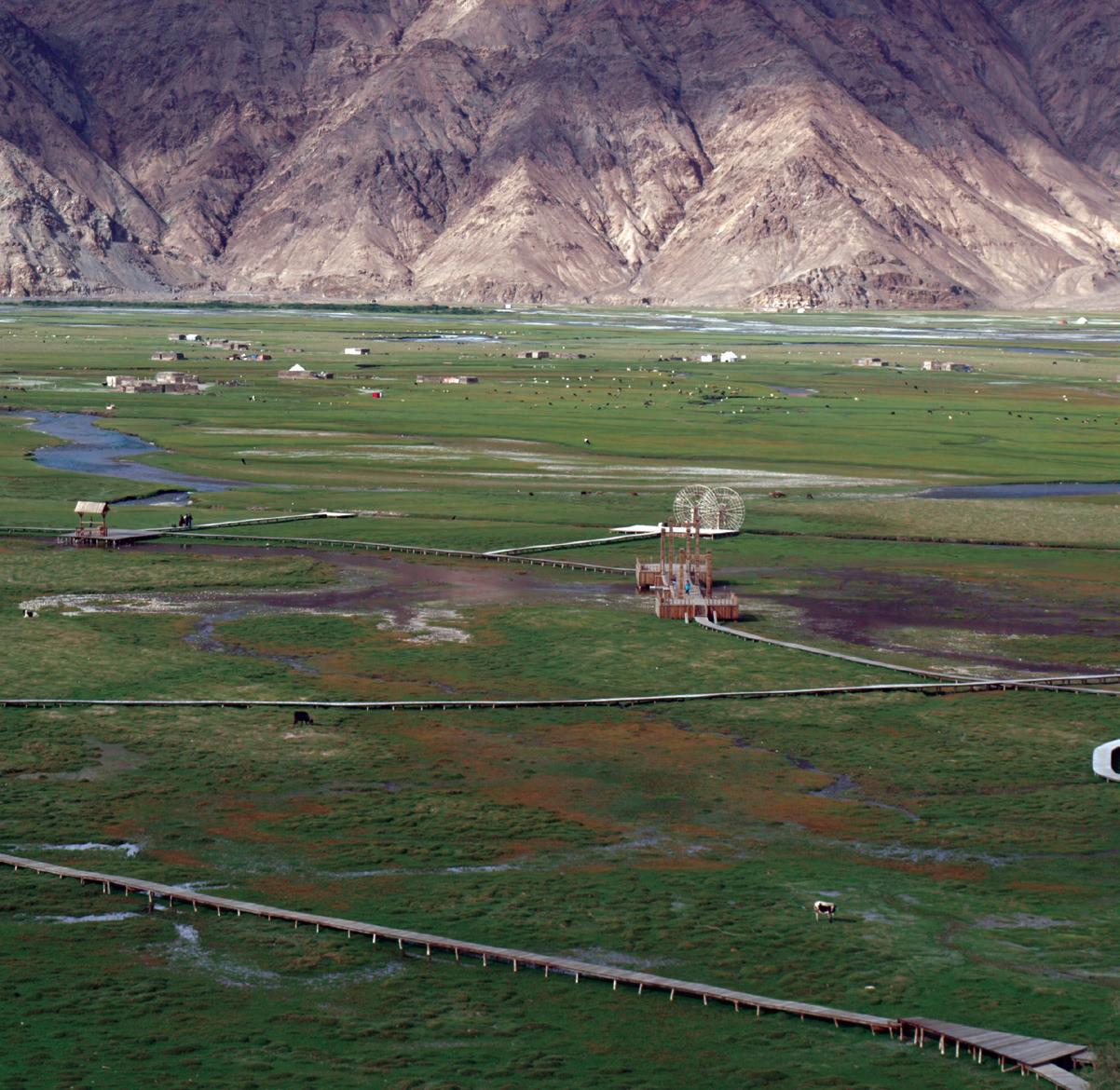
4 minute read
Travelogue
Travelling The Chinese Stretch Of The Silk Road

Advertisement
North – South links to India
For the last stretch of my journey I turned South between the peaks of the Pamir and Karakorum ranges along the Karakorum highway. This has been an important route, possibly stretching back to the Neolithic period, as recent excavations of a thriving trading hub at Bannu (Pakistan) have indicated.
The construction of these routes by kingdoms was essential for effective trade and revenues, but also a symbolic act of imperial power, often with impressive arches to mark the entrance to their territory and a point to collect customs duties. However, the duties meant extensive smuggling and also brigand attacks were a constant danger. Local tribesmen could sweep down from the hills and disappear again easily. They needed large amounts of horses etc. for their own use due to losses from battles and disease. They could also sell the goods and animals stolen. This activity enabled these people to transform their economies from subsistence pastoralism to agriculture and trade.
Proper highway construction was started by the British in 1827 to connect Hindustan to Tibet and to try and control the tribal warlords of what is now Afghanistan, but it was abandoned. In 1959 China and Pakistan started work on this route again, calling it ‘The Friendship Route’, finishing in 1979. It is part of INSTC the International North South Trade Corridor and also China’s 2013 ‘One Belt One Road’ initiative (silk route echoes), linking about 70 countries.
Above: Mountain glaciers along the route
It is one of the highest paved roads in the world, some say the eighth wonder of the world. However, it is difficult to maintain due to the stream of heavy trucks on fragile terrain, with constant erosion, falling rocks and fractures caused by a temperature differential from below zero to 45°C. I had a bumpy ride!
However, it was worth it as the views between gaps in the mountains were spectacular and we eventually reached a ‘magical land’: Tashgorgan, nestled between Afghanistan, Tajikistan and Pakistan. The transition was enchanting, like entering a fairy tale. Suddenly there was lush grass, grazing yaks and horses and extensive orchards full of ripe fruit. One almost expected to see a unicorn leap from behind a rock. It reminded me of a favourite T.S Eliot poem: The Journey of the Magi: A cold coming we had of it, Just the worst time of the year For a journey, and such a long journey: Then at dawn we came down to a temperate valley, Wet, below the snow line, smelling of vegetation; With a running stream and a water-mill beating the darkness, And three trees on the low sky, And an old white horse galloped away in the meadow
The area is nestled between the Karakorum (South East), Hindu Kush (South West) and Pamir (North West) mountain ranges, so there are spectacular views

on all sides. The town is built on a high, steep hill, which further enhances the views.
It was a major hub, with routes leading through the mountain passes to India to the South, Kashgar to the North leading onto Persia and Russia to the North West. To the West there was Wakhan in current Afghanistan and to the East was Yechengin in China.
Xuanzang, who we have met before, the monk who travelled the silk routes from China to India in search of Buddhist scriptures, passed through around 650 CE and remarked on the impressive Buddhist buildings with tall towers. Unfortunately, there are no excavated remains of these.
As well as being a major international trading hub it was also a market in its own right, selling locally produced fruit from its extensive orchards together with sheep and associated wool products, particularly carpets.
It was the capital of the Puli Kingdom, and around 1 CE needed a solid defensive structure: the impressive stone tower from which its name derives. It may have been the stone tower mentioned in Ptolemy’s Geography (140 CE), marking the mid-point between Europe and China, (although there are other possible sites). The tower controlled access to routes from all directions.
As well as the stone tower is the ‘princess’ castle, derived from a story about a princess who became pregnant by an enigmatic stranger while being kept on a high rock to protect her from local civil war. Her son became a powerful ruler forming the dynasty that was still in power at the time of Xuanzang’s visit. The story was still being told in 1921 when the explorer Stein visited.
Above: Tashgorgan City
There is a small museum in the city with interesting artefacts, including a mummy found in the dry surrounding area.
From Tashkorgan I returned to Kashgar and then flew into Tibet carrying with me thoughts of those ancient travellers who would have had a much more strenuous and dangerous journey along the various routes from Tashkorgan into Tibet along branches of this part of the silk route. I also dream of following their travels West from Kashgar along the routes to Iran. Bruce Huet
Below: Tashkorgan landscape with watermill










